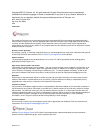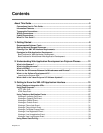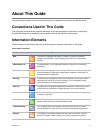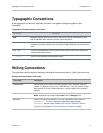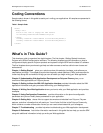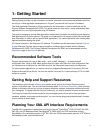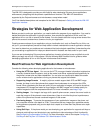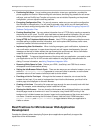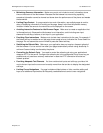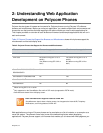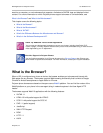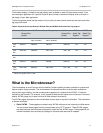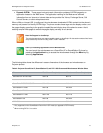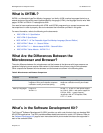
Web Application for Polycom Phones UC Software 5.0.0
Polycom, Inc. 9
The XML API is designed to provide you with flexibility when developing Polycom phone applications
while securely integrating into the phone’s capabilities and functions. The XML API features are
supported by the Polycom browser and microbrowser, except where noted.
You’ll find detailed descriptions and examples for the XML API features in Getting to Know the XML API
Application Interface.
Strategies for Web Application Development
Before you start to write your application, you need to define the purpose of your application. You need to
decide what tasks the application is going to perform, how complex the application will be, and if the
application will run on one or several phone models. You also need to take the varying screen sizes of the
phones into account to determine a common size for your application.
Creating screen mockups of your application using a visualization tool, such as PowerPoint or Visio, can
aid you in your development process and help others involved understand the overall application concept.
You need to determine your audience and understand their technological capabilities. Understanding who
you are creating an application for helps you determine which features are most useful for your users.
If you are new to developing Polycom phone applications, knowing a few tips to use and pitfalls to avoid
before you begin can aid you in the process. Use the following Best Practices lists for guidance when
developing applications to run on the Polycom microbrowser and browser.
Best Practices for Web Application Development
Consider the following when developing applications for the browser or microbrowser:
Using the HTTP User Agent You can use the HTTP user agent header information to determine
a variety of details about the phone, such as the model, and deliver content tailored specifically for
the phone’s screen size and other capabilities. You can also use JavaScript to detect the screen
and/or window size for applications running on phones that support the browser.
Supporting Image Formats A majority of phone models support both JPG and BMP image
formats, but keep in mind that phones that support the microbrowser do not support the JPGs
format. When considering the size and quality of your application’s images, you need to know that
compressed JPG images are better for large images, and BMP images have a better quality for
smaller images but lack the compression benefit. For more information, see Image Tags.
Scaling Images If an image is too large to fit a specific phone screen, ensure the server is able to
scale the image to fit the phone’s screen dimensions. Keep in mind that the phone’s performance
suffers if the phone has to scale oversized images to fit the screen.
Previewing Images To preview the appearance of your application’s images on the phone, set
your computer monitor color depth to 16-bit. This ensures that any images your application sends
to the phone are prepared using a color depth that is equal to or lower than the phones color depth
capabilities.
Using Soft Keys If the phone model you are developing your application for supports soft keys or
shortcuts, add soft keys and shortcuts to your application to take advantage of their functionality.
See Configuring Programmable Soft Keys. For more information, refer to the chapter Configuring
Soft Keys in the Polycom UC Software 5.0.0 Administrators' Guide.




